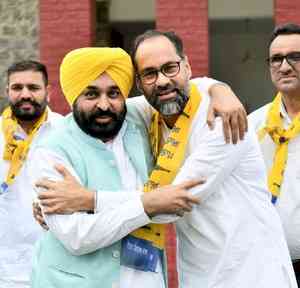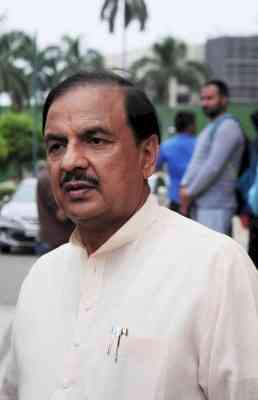India Sri Lanka CEO’s Forum Identifies Potential Areas for Strengthening Bilateral Ties

The Sri Lanka- India CEO’s Forum organised by the Ceylon Chamber of Commerce (CCC) and Federation of Indian Chambers of Commerce and Industry (FICCI) was held on August 4, 2012 with the participation of a large number of CEOs from both Sri Lanka and India.
The Co-Chairs for the event were Kulatunga Rajapakse, Managing Director of DSI Samson Group (Pvt) Ltd. from Sri Lanka and . Sunil Bharti Mittal, Chairman and Managing Director of Bharti Airtel Ltd. from India. The Forum was conceptualised at a meeting between the Prime Minister of India Dr. Manmohan Singh and the President of Sri Lanka Mahinda Rajapaksa.
The trade ties between Sri Lanka and India go back over 2500 years. India is fast becoming a global super power. The business community in India is the driving force behind this growth. Sri Lanka can reap benefits from the Indian growth story. Given the small size of the Sri Lankan market, it is important that Sri Lanka access the Indian market to increase its export and economic growth.
The trade balance between India and Sri Lanka at present is heavily in favour of India. Ways and means have to be identified to reduce this imbalance. The two Governments envisage doubling of trade between the two countries within the next three years. Sri Lanka would like to see obstacles to trade and investment removed to enable Sri Lankan businesses to penetrate into the Indian market. There are opportunities and partnerships to be forged for the mutual benefit of both the countries.
Some of the potential sectors identified for increasing trade and investment between the two countries are apparel, rubber products, power and energy, tourism, education, skill development, ports and shipping and infrastructure in general.
In the apparel sector, with China becoming more expensive apparel sourcing destination, it was felt that there is immense opportunity for India and Sri Lanka to increase their market share in the world. Further there is scope for Sri Lanka to increase export of apparel to India with further relaxation of the rules of origin and quota for apparel that is currently in place under the ISFTA.
There is high demand for rubber based components in India and at present companies in India face high prices and shortages. Hence an area for both countries to explore the possibility of forging joint ventures in rubber product sector to supply rubber components to India.
The CEOs also discussed the potential of cross promotion of tourism between the two countries. It was also highlighted that air connectivity is crucial to promote tourism. Providing higher frequency of operation to Indian airlines to Sri Lanka will help improve air connectivity between the two countries. In addition to that there is potential to invest in hotels. Interest was expressed by Indian CEOs to invest in mid-segment of hotels in Sri Lanka as opposed to luxury hotels. It was pointed out that further streamlining of investment procedures will help attract more investments. For example a suggestion was made to establish a land bank identifying land available for hotel construction in tourism zones.
Given that an additional 35,000 hotel rooms are expected to be constructed in Sri Lanka in the next few years, there will be high demand for manpower in the tourism sector. This provides an opportunity for India to invest in hotels in Sri Lanka.
Given the rapidly growing demand for electricity in India, there is potential for Sri Lanka to export power to India during the off peak hours and vice versa and for Indians to invest in power generation in Sri Lanka. Sri Lanka has a potential in excess of 40,000 MW of wind energy. To encourage investments in to wind power generation, it was pointed out that the wind resources availability in Sri Lanka should be identified and land earmarked for wind power projects. It would also make sense to expedite the implementation of undersea transmission linkages so that surplus power can be exported to India and this will help in bridging the trade deficit between the two countries. The necessity to have a policy and regulatory framework that enables big power projects to be done by private sector was also highlighted. Further it was stated that Sri Lankans can invest in power generation in India and 100 percent foreign equity participation is allowed.
Sri Lanka currently faces shortage of skills in a number of sectors. Therefore it was agreed that internationally recognised Indian education institutes should be encouraged to set up branches in Sri Lanka. To encourage investments into the higher education sector in Sri Lanka, it is important to fast track setting up the right regulatory framework to facilitate such investments.
Further it was agreed that Colombo Port is crucial for India for its transshipment. Indian CEOs stated that the regulatory framework in Sri Lanka is more efficient than in India and the bureaucracy is more manageable compared to India. Therefore India should maximise benefits from the geographical locational advantage of Sri Lanka to access the rest of the world.
The CEOs of both the countries emphasised the importance of having a flexible visa regime between the two countries. It was specially pointed out that Sri Lanka should facilitate multiple entry visa for businesses from India without hassle and from Indian side the minimum salary requirement of India of US$ 25,000 needs to be relaxed for Sri Lanka.
The Commerce Ministers of both countries and the Senior Minister of Monetary Cooperation of Sri Lanka graced the occasion and agreed to support the initiatives that will be taken by the CEOs. The two Governments have already decided to establish a Joint Task Force to come up with a road map to further enhance economic cooperation between the two countries.

 cityairnews
cityairnews 














